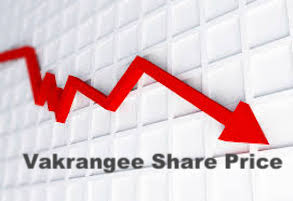Let us see how technical analysis can be used by long term investors.
I am a blogger who writes about investment, personal finance, and stocks in particular.
But when I watch NDTV Profit, it gives me goose bumps.
I really get swayed away by the amount of market data they share.
More than that, it makes me feel uninformed.
I am aware that for majority of people, this is the case.
But I am a investment blogger who is supposed to know all these stuff, isn’t it?
Frankly speaking I cannot make any useful conclusion out of stocks data these financial news channels throw at us.
Hence I decided to do some research on those jargons myself.
One basic difference was clear from the very beginning. I blog about fundamental analysis.
But TV channels talk more about “technical analysis”.
Is there any way technical analysis can be made useful for long term investors?
Long term investors rely more on fundamental analysis.
They can read complicated financial reports but not those price-chart jargon’s.
Another thing that became evident to me about technical analysis on TV.
TV news channels throw too many non useful information to their viewers.
Instead of talking about only specifics, they do more of blah-blah.
As a result, it really difficult for common men to decipher from what is useful and what is trash.
May be this is the strategy of so called investment gurus.
Make people nervous about stock-investment by bombarding with too many non-related information’s.
As a result, people switch from self-investment to advice-investment.
So what is the problem with advice-investment?
If one gets a good advisor there is no problem.
But there are really few good, free investment advisors available in the market.
Advisors who are good are either hired by corporate or they are too busy making fortune for self.
In short, good advisors are rare and not accessible.
So its better to take time and learn some concepts by oneself.
I am sure many would have tried to learn technical analysis, but they only end up and stop in confusion.
Technical analysis is so complicated?
In totality technical analysis can get complicated.
But long term investors do not need to look at all the stuffs of technical analysis.
This post is about technical analysis for long term investors, so lets stick to specifics.
What specifics I am talking about?
Yes, in this post we will talk about how to read stock charts.
Long term investors do not need to read charts and do micro analysis.
That is for day traders.
We will stick to macro analysis which is more suitable for long term investors.
A typical stock chart that we often see on TV channels is shown here.
For a common man the only thing one can make out of it is price trend.
But there is more to that chart.
Long term investors can look slightly more deeply onto those price trends.
It is evident from this chart that price moves up-down rapidly in short term.
But in long term there is a definite trend. The stock chart shown here is of TCS:NSE.
This price chart is showing TCS stock price going up steadily from year 2012 to year 2016. By middle of year 2016, price falls slightly.
So what we can do with this stock chart?
If we know how to dig in slightly deeper into these price charts, we can actually take a buy or sell call. But how?
This is what is called as technical analysis.
Technical analysts does not bother about the business fundamentals.
Just on basis of stock charts, BUY or SELL decision is taken.
But how we can rely only on stock charts?
No, we are not suggesting to depend only on stock charts to buy/sell stocks.
Do the stock analysis based on its fundamental strengths.
Once a stock is identified as the one having strong fundamentals, go for technical analysis.
But why technical analysis is required at all?
Technical analysis will help long term investors to time the entry or exit.
No matter how strong are business fundamentals of a stock, if it is not bought at right prices, the returns will be lower.
So what a long term investors should look for in stock charts?
For any stock investor, it is essential to be aware about the stock’s:
- level of support &
- level of resistance.
‘Level of support’ is that price below which stock-price is not likely to fall.
‘Level of resistance’ is that price above which stock-price is not likely to go.
The snapshot of TCS:NSE that I have shown here is its 5 Year history.
Please note that, level of resistance and level of support is not the same thing as 5Year High or 5Year Low price.
We will see how.
You may also ask that, a stock will always adhere to its “support” and “resistance” levels?
No, in exceptional cases they beat those barriers.
But in normal times the stock price will remain volatile within its “support” and “resistance” levels.
Lets see the support and resistance levels in our example stock TCS:NSE
The line X shows TCS:NSE the ‘level of support’ in year 2012.
A person sitting in year 2016 will call line X as support-1.
But lets try to see this graph from perspective of a person sitting in year 2012 itself.
This will give us more clarity about the “Supports” & “Resistances” and how there is a very thin line between them.
A person in year 2012, will see stock price of TCS hovering around Rs 1,380 levels for almost a year.
For a person in 2012, TCS is just not able to break this price barrier.
So we can theoretically call this level also as “Resistance-1”.
The support and resistance levels will be defined from where you are seeing the stock price chart.
When we are looking in past, average lows will be seen as supports.
When we look in future, current high’s will be seen as resistance.
The line Y shows TCS:NSE the ‘level of support’ in year 2014.
After breaking the Rs.1380 resistance level of year 2012 (we are calling it as X-support 1), TCS prices continued its uptrend till Oct’2013.
The price jumped from 1380 levels to 2125 levels.
A person sitting in year 2016 will call line Y as support-2.
But lets again try to see this graph from perspective of a person sitting in year 2014.
A person in year 2014, will see stock price of TCS almost holding itself and not being able to break the barrier of 2125 levels.
TCS:NSE price remain at this level for nearly 8 months. So we can theoretically call this level also as “Resistance-2”.
The line Z shows TCS:NSE the ‘level of resistance’ in year 2016.
In Oct’2016, TCS:NSE price touched its peak at Rs.2770 levels.
Since then, till today, TCS:NSE has not been able to break this barrier.
Hence we are calling it as level of resistance.
Its been nearly 2 years now that TCS:NSE is not able to beat Rs.2770 levels.
So far so good. Now we know how to figure out ‘Resistance’ and ‘Support’ in stock chart.
But how to conclude?
A stock trader watch stock which are trading close to its resistance levels.
Once the stock breaks its resistance levels, it price is most likely to go up.
Hence trader buys stocks which breaks resistance levels.
But how a long term investor (value investors) should look at these stock charts?
For long term investors, support levels are more interesting.
In case of our example TCS:NSE stock, when stock price falls below Support-2 levels it start looking good.
Its an opportunity to BUY more. Here prices gets undervalued.
Final words…
For long term investors, resistance levels are those levels at which they would like to sell their holdings.
Value investors buy stocks below support levels and sell at resistance levels.
Note of caution for long term investors.
While doing technical analysis of stocks, make sure that the selected time horizon of charts are broad.
I will suggest time horizons must be selected 5 years or more.







Where is the chart
Hi Mani,
it seems that the X, Y and Z lines you’ve mentioned regarding the Supports and Resistances in your post are not visible on the chart link (TCS:NSE).
Also, I was unable to find a chart with these lines anywhere else in your post.
Can you pls. confirm and help me out here?
Thanks.
there is no chart (TCS:NSE).